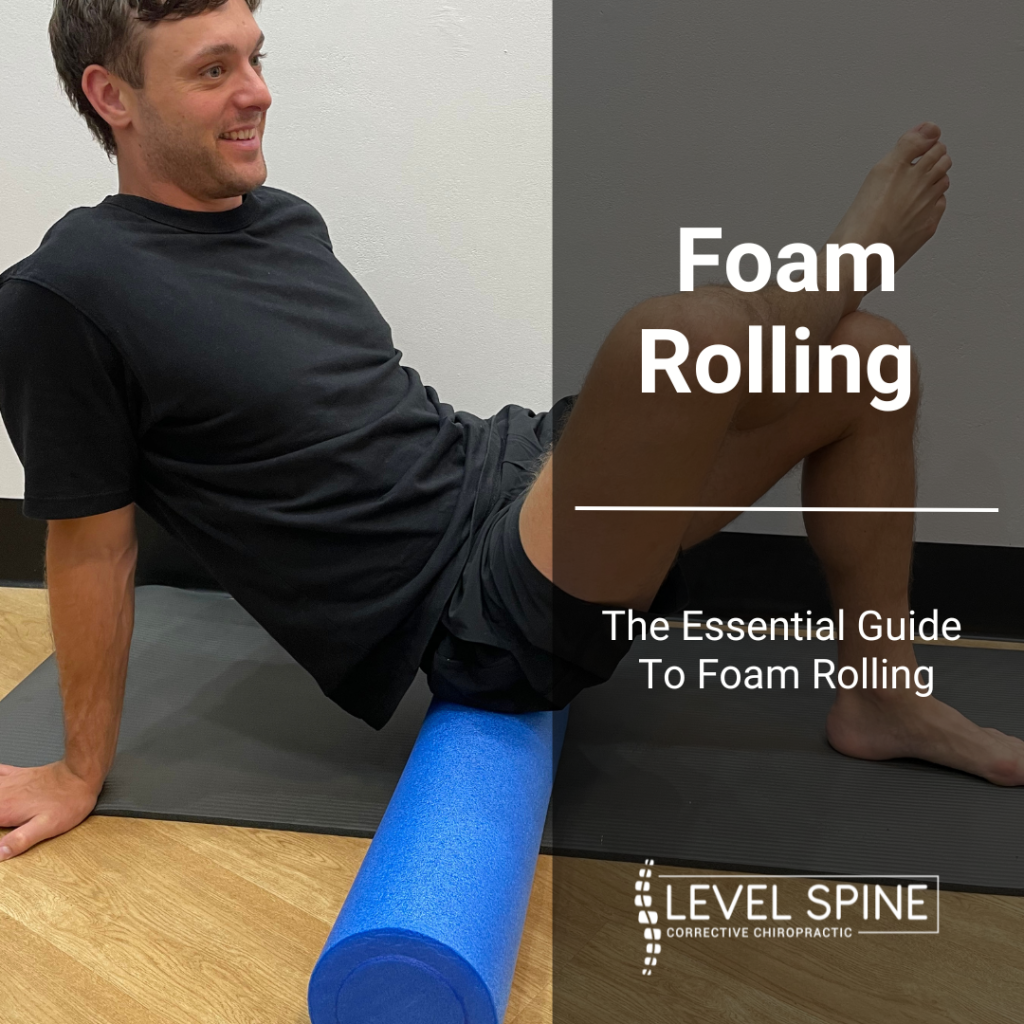Foam Rolling is for Everyone!
Foam rolling is more than just a trend – it’s a powerful tool for improving mobility, relieving muscle tension, and enhancing overall well-being. Whether you’re recovering from a workout, spending long hours at a desk, or simply looking to relieve everyday muscle discomfort, foam rolling can make a world of difference.
As chiropractors dedicated to promoting optimal movement and spinal health, we’ve seen firsthand the benefits of incorporating self-care techniques like foam rolling into daily routines. It’s an effective, accessible way to give your muscles the attention they need, helping you move more freely and feel better in your body.
This guide is designed to give you practical, easy-to-follow techniques, with a focus on both prevention and recovery. We’ve broken it down into simple steps, so whether you’re new to this rolling or already familiar with the practice, you can immediately start feeling the benefits.
By making foam rolling a regular part of your routine, you’ll not only release tight muscles but also improve your posture, reduce muscle soreness, and boost your overall mobility.
The 5 Key Benefits of Foam Rolling
- Relieves Muscle Tension
Muscles may accumulate tension due to poor posture, long periods of sitting, or repetitive movements. Foam rolling helps break up tightness in muscles and fascia (the connective tissue surrounding muscles), reducing discomfort and restoring flexibility. - Improves Range of Motion
By releasing tight muscles, foam rolling increases mobility in muscles and joints, helping you move more freely and improving performance in daily activities and exercise. - Speeds Up Muscle Recovery
After exercise, muscles can feel sore and stiff. Foam rolling enhances circulation and blood flow, which aids in muscle recovery by delivering oxygen and nutrients to muscle tissue. This reduces soreness, helps remove waste products like lactic acid, and accelerates the healing process, allowing you to get back to your routine quicker. - Prevents Injury
By regularly foam rolling, you help maintain the flexibility and pliability of your muscles, which may play a key role in injury prevention. Foam rolling keeps muscles and fascia supple, reducing the risk of muscle strains, joint issues, and overuse injuries. It’s an important tool for ensuring that your body stays in top condition for all types of movement. - Improves Posture
By releasing tight muscles in the chest, shoulders, and back, foam rolling encourages better spinal mobility, helping to reduce the risk of chronic pain, especially from prolonged sitting.
How to Release Tension in Key Muscle Groups
While foam rolling can be applied to your whole body, certain areas often need extra attention due to tension, tightness from posture, activity, or muscle imbalances. To get the most out of your session, choose equipment that suits the size of the muscle you’re targeting and matches your comfort level.
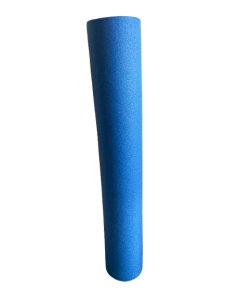

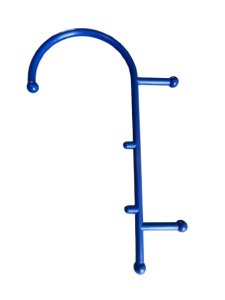
8 Essential Muscles To Target
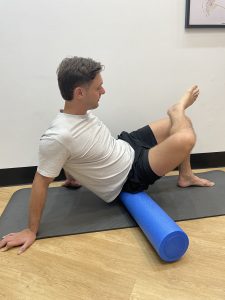
Click HERE for a video demonstration!
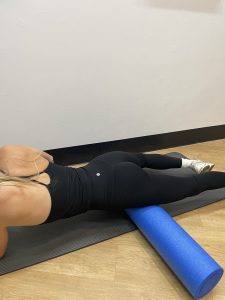
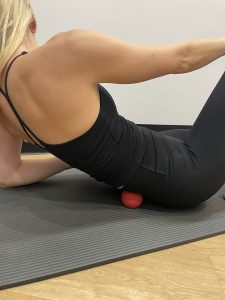
Click HERE for a video demonstration!
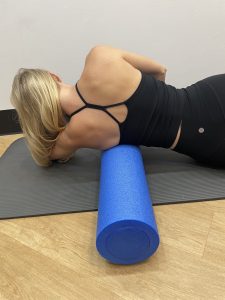
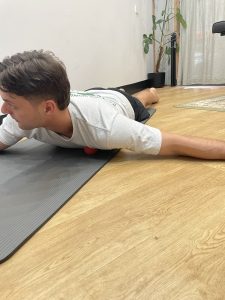
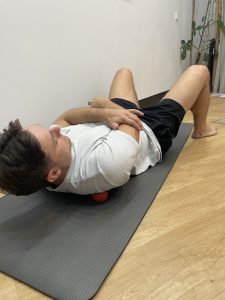
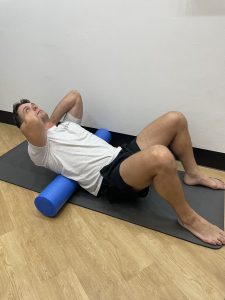
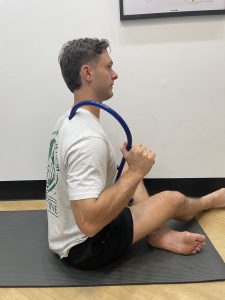
Tips for Effective Foam Rolling
- Move Slowly and Deliberately
Take your time when foam rolling. Move slowly across the muscle group, focus on your breath and allow your body to relax into the pressure. Aim to spend 30 seconds to 1 minute per muscle group, applying additional time on areas with the most tension. - Apply Gradual Pressure
Start with gentle pressure, especially if you’re new to foam rolling or targeting a sensitive area. As your muscles adapt, gradually increase the pressure. Remember, it should never feel excruciating – foam rolling should be intense/uncomfortable, but not painful. - Focus on the Entire Muscle
Work the entire muscle from its attachment points – starting from the origin and moving to the insertion. Rolling from one end to the other allows you to reach the entire muscle including the attachment sites. - Address Sore Spots
If you find a particularly sore spots, you’ll need to pay them extra attention. When you locate a tight or tender area, pause and hold pressure there.
Take a deep 3-4 second inhale whilst you contract (squeeze) the muscle.
Slowly exhale as you relax the muscle.
Focus on allowing the area to “soften” and muscle relax.
Repeat this process up to three times for each particularly tight area of the muscle.
- Use this as Part of a Larger Recovery Routine
Foam rolling works best when combined with other proactive health practices, such as stretching and strengthening. Consider using foam rolling as part of a pre or post workout routine to enhance flexibility and aid in recovery.
Common Mistakes to Avoid
- Rolling Directly Over Bones
Avoid applying pressure over bones, as delicate nerves and blood vessels in these areas can be irritated or damaged by friction. - Pushing Directly Into Joints
Avoid sustained pressure directly into a joint. Excessive force or loss of control can lead to joint damage. Instead, focus on the surrounding muscles, working up to and around the joint. - Don’t Overdo It
Whilst it can be intense, it’s important not to overdo it. If your starting out, 3-5 sessions per week is acceptable, allowing your muscles time to recover between sessions. Over-rolling can cause irritation and set back your progress, so moderation is key.
Bonus: Simple Mobility Hack
In addition to foam rolling, incorporating more movement into your daily routine can significantly improve your posture and overall spinal health. Many of us spend long hours sitting in chairs, but humans have sat on the floor for thousands of years – reintroducing this simple habit can provide powerful benefits.
Floor sitting encourages natural movement, stretches your spine, joints, and muscles, and counters the stiffness caused by prolonged sitting. You can easily integrate it while watching TV, reading, or even working on your laptop. There’s no need to schedule it as part of your rehab or workout—simply make it a new way to sit throughout your day.
Maximise the Benefits of Floor Sitting
- Explore Movement
Experiment with shifting your body, pelvis, and hips into various positions to encourage movement.
When you feel tension or discomfort, hold that position and stretch into it.
Use your breath to help relax muscles: inhale deeply to prepare and exhale slowly to deepen the stretch and improve your range of motion.
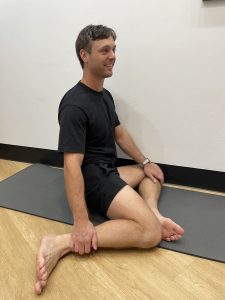
- Practice Getting Up and Down With No Hands
This exercise helps build strength and mobility, encouraging better functional movement.
Ensure it’s safe to practice this; if needed, have support nearby (like a chair or couch).
Try to get up and down from the floor without using your hands. If this feels challenging, use a stable surface to assist, gradually building confidence and strength over time - Stretch Your Feet and Ankles
Give your feet a break from being “boxed up” in shoes all day. Try these:
– Sit on your feet in different positions.
– Roll and stretch your ankles.
– Extend, spread, and massage your toes.
– For deeper relief, use a massage ball or theracane to apply targeted pressure and mobilise foot tissues (muscles, joints etc.), promoting circulation and flexibility. - Foam Roll
This is a perfect time to also utilise foam rolling!
Ready to Start Your Journey to Better Health?
Foam rolling, proper posture, and mindful movement are just the beginning of improving your spinal health and overall well-being. At Level Spine Chiropractic Newcastle, we’re dedicated to helping you stay pain-free, move better, and feel your best with personalized chiropractic care.
If you’re looking for a Newcastle chiropractor to help with posture correction, injury prevention, and mobility, book a consultation today. Discover how chiropractic adjustments, spinal traction, and tailored movement strategies can support your health goals.

